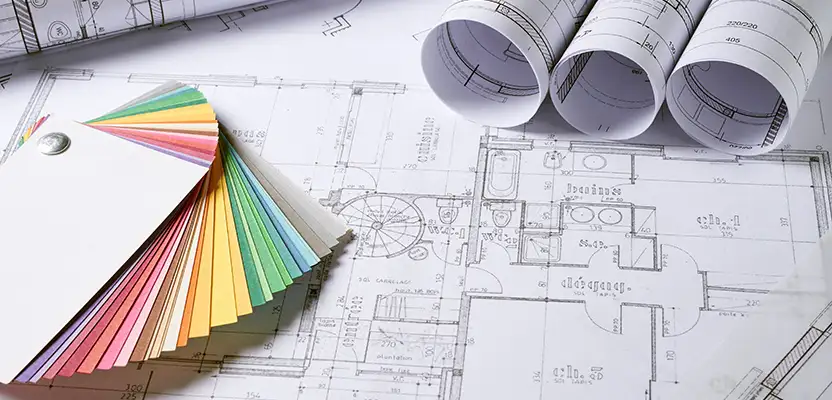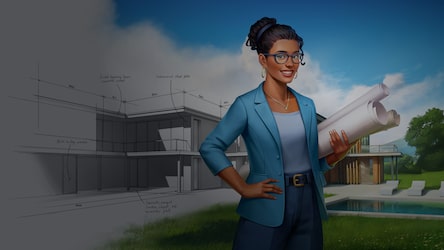Comprehending the Diverse Profession Paths Available for Aspiring Architect
As an aspiring Architect, you have a globe of profession paths waiting on you. Each course supplies distinct obstacles and opportunities to use your creative thinking and technological know-how. Whether you're drawn to standard design or the subtleties of lasting style, there's a niche that straightens with your passions. Understanding these varied choices can shape your specialist trip, but which instructions will you pick to check out first?
Traditional Design: Creating Structures and Structures
Standard style concentrates on developing structures and frameworks that mix functionality with aesthetic charm. As you discover this area, you'll appreciate the elaborate equilibrium in between kind and purpose. You'll learn to draw motivation from historic designs, including components like symmetry, materials, and craftsmanship. Your designs can reflect cultural heritage, showcasing local customs while satisfying modern-day demands.
You'll establish abilities in preparing, model-making, and website evaluation, permitting you to imagine and communicate your ideas successfully. Involving with clients, you'll need to understand their vision and translate it right into viable layouts.
Moreover, building codes and sustainability practices are important in your work, guaranteeing your frameworks are safe and eco-friendly. As you expand in your profession, you'll find opportunities in household, business, or perhaps restoration projects, each offering one-of-a-kind difficulties. Embracing traditional style paves the way for a meeting occupation that admires the past while forming the future.
Urban Planning: Forming Neighborhoods and Public Spaces
As an aspiring Architect, you can play a necessary role as a city coordinator, changing exactly how communities operate and engage. By using area interaction strategies, you'll assure that homeowners have a voice fit their environment. And also, integrating lasting layout principles will certainly assist develop spaces that not just meet today's demands however additionally secure the future.
Role of Urban Planners
While several could think of architects as the sole visionaries behind buildings, urban coordinators play an essential role in shaping the broader landscape of areas and public rooms. By teaming up with numerous stakeholders, you'll aid make parks, transport systems, and household areas that promote social interaction and access. Your knowledge in spatial style and area characteristics allows you to visualize future growth while protecting cultural heritage.
Neighborhood Interaction Methods
Reliable community interaction strategies are important for city planners to ensure that the voices of residents are heard and valued in the preparation process. To promote purposeful discussion, you ought to prioritize open forums and workshops where neighborhood members can express their ideas and issues. By proactively paying attention and including feedback, you'll produce areas that show the area's needs, ultimately leading to more successful and sustainable urban environments.
Sustainable Design Principles
When developing urban spaces, incorporating sustainable design concepts is important for producing atmospheres that prosper both ecologically and socially. You ought to start by focusing on energy efficiency, using materials that reduce waste and advertise recycling. Take into consideration incorporating environment-friendly rooms, like parks and yards, to improve biodiversity and enhance air high quality. Advertising walkability and public transport can lessen reliance on autos, cultivating a much healthier area.
Designing with water preservation in mind is likewise essential-- think of rain yards and permeable surfaces to handle stormwater. Involving community participants during the preparation process guarantees that the rooms you produce fulfill their requirements and encourage social communication. By accepting these principles, you'll add to lively, sustainable urban landscapes that profit everyone.

Landscape Architecture: Creating Sustainable Outdoor Environments
As you check out landscape design, you'll discover vital style principles that create gorgeous and useful outside spaces. Lasting methods play an important duty in making sure these environments grow while decreasing ecological impact. And also, you'll find a selection of profession opportunities that permit you to make a genuine difference in just how people interact with nature.
Style Concepts in Landscape
Comprehending design concepts in landscape architecture is crucial for producing sustainable outside atmospheres that balance with nature. You'll need to ponder aspects like equilibrium, percentage, and scale to ensure your designs feel natural and welcoming. Incorporating native plants not just enhances biodiversity however additionally decreases water use, making your landscape resistant. Think regarding the circulation of space and how individuals connect with it; pathways and seating areas must welcome expedition and relaxation. Furthermore, pay focus to seasonal changes, developing with products that enhance the environments year-round (Architect). By prioritizing sustainability and aesthetics, you can create outside areas that enhance the area and advertise well-being. Embracing these principles will set a strong foundation for your occupation in landscape style.
Sustainable Practices Summary
Sustainable practices in landscape architecture not only focus on aesthetic appeals however also prioritize eco-friendly wellness and source conservation. By integrating native plants, you boost biodiversity and reduce the demand for chemical plant foods and chemicals. Applying reliable watering systems assists conserve water and minimizes runoff, shielding nearby environments. You can make spaces that promote soil health and wellness, such as utilizing organic materials and practicing permaculture concepts. Furthermore, incorporating eco-friendly infrastructure, like rainfall gardens and permeable pavements, help in stormwater administration and reduces city warmth. When you produce outdoor environments with sustainability in mind, you add to a healthier earth and offer rooms that promote area connection. Eventually, these practices ensure your styles benefit both individuals and the atmosphere for many years to find.
Occupation Opportunities Exploration
With a strong foundation in lasting methods, landscape architecture provides a range of career courses that permit you to make a meaningful effect on the environment. You could function as a landscape developer, creating visually pleasing and useful exterior areas, or specialize in ecological remediation, assisting to revive broken ecosystems. Urban coordinators commonly collaborate with landscape designers to produce eco-friendly spaces in city setups, enhancing city livability. If you're passionate concerning education and learning, think about becoming a landscape design educator, inspiring future generations. Furthermore, you could collaborate with nonprofits concentrated on environmental sustainability or engage in research to introduce new techniques. Each course not only forms stunning environments but additionally promotes a healthier planet for future generations.
Lasting Style: Focusing on Eco-Friendly Practices
As you explore your career in style, accepting environmentally friendly techniques can set you apart in an affordable field. Lasting style concentrates on link producing structures that reduce additional hints ecological effect while boosting resident health. By integrating eco-friendly materials, energy-efficient systems, and lasting building strategies, you'll add to a greener future.
Start by obtaining understanding of eco-friendly accreditations like LEED or BREEAM, which can bolster your credentials. Take into consideration how all-natural light, ventilation, and thermal effectiveness can maximize style. Team up with engineers and environmental experts to innovate services that minimize waste and save sources.
Don't fail to remember the importance of neighborhood participation-- engaging regional stakeholders can motivate styles that integrate with the environment. As customers increasingly focus on sustainability, your experience in green methods will not only bring in tasks yet also accomplish your interest for liable design. Embrace this vital facet of the career, and view your career flourish.
Historic Preservation: Securing and Recovering Social Heritage
While you commence on your architectural journey, take into consideration the necessary function of historic preservation in keeping our cultural heritage. This area concentrates on the security and repair of substantial buildings, sites, and frameworks that inform the stories of our past. By taking part in historic preservation, you'll assist secure the building legacy that shapes area identity.
As a historical preservation Architect, you'll analyze historic significance and analyze the problem of structures. You'll function carefully with guardians and historians to ensure authentic remediation techniques are utilized. This job course enables you to blend imagination with research study, enabling you to make services that appreciate original materials and craftsmanship.
Your work not only contributes to sustainability by recycling existing structures however also promotes a sense of satisfaction within communities. Welcoming this path will aid you become a guardian of background, preserving the stories and looks that enrich our lives.
Interior Style: Enhancing Indoor Spaces
Historic conservation and interior design both share a dedication to enhancing the constructed atmosphere, yet they concentrate on different elements. While historic conservation highlights preserving a framework's historical and social worth, indoor design absolutely nos in on enhancing indoor rooms for capability and looks.
As an aspiring Architect, you'll find that interior design enables you to mix creative thinking with technical skills. You'll create spaces that not just look excellent however also promote comfort and effectiveness. This field includes recognizing exactly how light, color, and products engage within an area, influencing mood and usability.
You'll work on numerous projects, from domestic homes to business offices, making certain that each setting fulfills check my blog the needs of its owners. By prioritizing user experience, you can change interiors right into motivating and functional spaces, making a considerable influence on just how individuals connect with their environments. Welcome the possibility to boost interior atmospheres and shape the way people live and work.
Industrial Layout: Combining Capability With Visual Appeals
Industrial design plays an important role in creating items that seamlessly mix aesthetics with capability, making certain that what you make use of everyday is not only visually appealing but additionally sensible. As a hopeful Architect, you can engage yourself in this field, concentrating on creating whatever from furnishings to customer electronics. Your job includes understanding customer requirements, materials, and manufacturing procedures, allowing you to develop ingenious solutions that boost daily experiences.
In industrial style, you'll frequently team up with manufacturers, designers, and online marketers, making certain that your styles are not only gorgeous yet likewise possible. You'll find out to balance form and function, focusing on usability without sacrificing style. By honing your abilities in mapping out, 3D modeling, and prototyping, you'll be fully equipped to bring your ideas to life. This career course provides a vibrant setting where creative thinking fulfills usefulness, making it a gratifying selection for architects thinking about forming the items of tomorrow.
Frequently Asked Questions
What Educational Qualifications Do I Required to End Up Being a Designer?
To become an engineer, you'll require an expert degree in style, normally a Bachelor's or Master's. Furthermore, you'll have to finish an internship and pass the Architect Enrollment Evaluation to practice legitimately.
Exist Accreditation Requirements for Various Architectural Career Paths?
Yes, there're qualification demands for various building paths. Architect. You'll require to pass exams, full teaching fellowships, and sometimes seek specialized training, depending upon your chosen emphasis, like landscape architecture, city style, or historical preservation
What Software Skills Are Essential for Engineers Today?

Exactly How Can I Gain Practical Experience While Studying Style?
You can get useful experience by interning at building firms, joining layout competitions, volunteering for neighborhood projects, or teaming up with classmates on real-world assignments. These possibilities enhance your abilities and build beneficial connections in the sector.
What Task Opportunities Exist Outdoors Standard Architecture Firms?
You can check out different task chances outside conventional architecture companies, like city planning, interior decoration, landscape style, building and construction monitoring, genuine estate development, or even duties in sustainability consulting. Each deals distinct difficulties and incentives.
Whether you're drawn to typical architecture or the subtleties of lasting design, there's a particular niche that aligns with your rate of interests.When making urban areas, including lasting design principles is critical for creating atmospheres that grow both ecologically and socially.As you discover landscape architecture, you'll find crucial design concepts that create attractive and practical outside rooms.Understanding design principles in landscape style is essential for creating sustainable exterior settings that harmonize with nature.In industrial style, you'll usually collaborate with marketers, engineers, and manufacturers, making sure that your styles are not only gorgeous but also feasible.